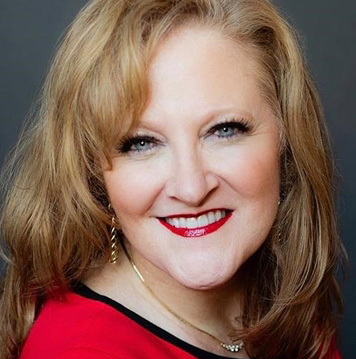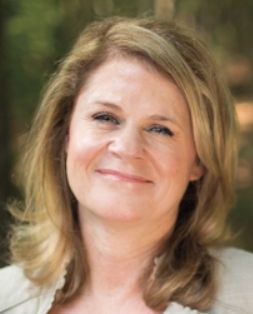
[Editor’s Note: This is the first in a series of articles about measurement issues from PRNEWS and partner Intrado Digital Media.]
Many PRNEWS readers already have or will be celebrating Measurement Month in November. While it’s a good thing that PR pros set aside time each year to celebrate measurement, a more sober reflection also may be in order. In a world bursting with digital data and ample free tools, there remain a number of roadblocks to effective measurement.
The lowest hanging fruit is the sizable segment of communicators who consciously choose to avoid measuring, Mark Weiner, chair of the Institute for PR Measurement Commission and chief insight officer at Cision, wrote in these pages recently (PRN, September 2019).
Avoiding measurement and data, he noted, hampers the profession, particularly as business leaders increasingly favor making decisions based on data.
As Sunita Menon, a director at IBM and chief of staff to CCO Ray Day, says, “You may not be in the business of data, but data is in your business.”
For Weiner, this deliberate avoidance of measurement is a matter of “unwillingness rather than inability.”
Numeracy Fears

Global Managing Director
AMEC
Johna Burke, global managing director of AMEC, the international communications measurement organization, agrees generally with Weiner, but has a slightly different take. She’s heard the oft-repeated idea that communicators fear working with data and numbers. Burke believes, though, the unwillingness to measure is more the result of a lack of confidence—not ability—to use data “to provide meaningful insights.”
This causes those communicators without clear objectives “to revert to charts and graphs that they think look good,” she says.
There’s also the fear of measurement revealing what’s not known without it. Weiner quotes an agency president who told him candidly: ‘I don’t measure because I’d rather forgo being a proven success in exchange for never being a proven failure.’
This type of ignorance-is-bliss thinking speaks in part to another hurdle that impedes measurement: fear of the unknown. For Burke, that fear “is not based in reality,” though she admits it exists. Most senior executives don’t expect every campaign to be a homerun, she says. What they want, however, “is qualitative insight on what failed, why, and a plan to mitigate that loss in the future.”
Another point about Weiner’s agency president relates to accountability, or the lack of it. Measuring, argues Deirdre Breakenridge, CEO, Pure Performance Communications, “is the only way to show accountability.” And if accountability is an important part of an organization’s culture, it should filter down to all departments, including PR. Such cultures, she believes, have embraced communications measurement.
Ineffective Measuring

CEO
Pure Performance Communications
On the other hand, Breakenridge says she’s “not come across a PR pro who has admitted, ‘I’m not measuring.’” Instead, she’s met many PR practitioners who are measuring, but are doing so ineffectively. “Mostly they’re collecting outputs.” Counting only outputs fails to generate useful insights or a comprehensive picture of PR’s value to an organization.
Adds Burke, “If the communications team is still delivering reporting based on ‘counts and amounts’ and not insights, the organization is not likely to increase the budget for communications.”
The remedy, of course, is that communicators need to implement more meaningful measurement programs.
One way to do this is to align what is measured with the company’s business goals and objectives. This is why communicators are urged to have business goals in mind before beginning a measurement effort. Some communicators advocate coming up with a business question you want answered and then measuring.
Says Burke, “Communication leaders who focus their effort on goals and objectives of outcomes…and providing insights to the C-suite…are not begging for budget, but are being given greater access to data and leadership. This is because they are demonstrating how they are influencing change, growth and overall organizational success.”
Business Objectives
That’s good advice, but some communicators lack knowledge of business objectives. That’s an internal communications issue, Breakenridge believes. Culture, she says, needs to include the value of having everyone [in the company] understand “how the business makes money.” With that knowledge, communicators should be better able to measure what matters as opposed to what’s easy.
It’s not always that direct, however. In certain organizations, communicators find themselves in a bind since senior executives fail to agree on what’s most important.
Sometimes it’s a silo issue as “each area [of the business] has its own ideas about goals,” Breakenridge says. This can impede measurement since communicators are uncertain about business objectives and what they should be doing to further them.
One solution is to bring in analysts from the outside, Breakenridge says, to look at the enterprise as a whole and help get departmental goals aligned.
Clarity or Not?
Burke sees the issue somewhat differently. “I don’t think corporate leaders are unclear about business goals,” she says. “The barrier to success is a lack of clearly stated and measurable goals…and how communications can demonstrate value…and support those goals.”
Embarrassment of Riches

SVP, Global Head, Strategy
Intrado Digital Media
Another measurement roadblock stems from too much data. The amount of data generated in the digital age “can be overwhelming,” Breakenridge admits. Still, “though everyone seems to talk about big data…what you really want is to do is find the data that’s most useful for your organization…the smart data.”
Burke also acknowledges data proliferation, but says, “Only a small portion of the market has access to the fire hose of data available throughout their organization.” As a result, most communicators are not inundated. In fact, she feels “it’s the opposite…communicators do not have access to enough data to understand all of the ways” they can help various parts of the enterprise.
Breakenridge is optimistic that as tools improve, finding smart data and weeding out unnecessary data will become easier. She has her favorite pay tools, but also praises free programs, particularly Google Analytics. In addition, she points out that those using tools must be on their game. “A tool is only as good as the person using it…and the search you set up.”
And the tools must deliver, too. Sylvie Harton, SVP and global head of strategy at Intrado Digital Media, says some tools are ineffective.
“Unlike in marketing, where we see rapid advances in technology,” she believes some tools PR pros use to measure “have not kept pace...being stuck in an outdated way of working” makes it hard to measure.
PR pros who use “multiple tools and multiple logins” find it difficult to get “the full picture of how campaigns are performing...as they try to interpret different sets of data.” A solution is an all-in-one platform that allows one “to measure all your communication efforts right from one dashboard.” Several tools integrate data in a single dashboard, including one from Intrado Digital Media.
Other Issues
For Burke and Breakenridge, a lot of measurement impediments are related to culture and education. Many communicators have not been trained to understand the value of measurement and/or they’re not working in an environment where measurement is deemed important.
“A lot of communicators say they don’t have the time or resources to measure. You have to make the time…make it a priority,” Breakenridge says. The biggest hindrance to measurement is “attitude,” of the company and the communications team, Burke adds.
Culture Change
The question, then, is how to change a non-measuring culture? It’s similar to most PR campaigns. Raise awareness of measurement successes, link measuring to success and add a bit of fun.
Ideas include presenting case studies of how communications teams have thrived when they’ve used measurement to derive insights. Using personal stories can also help. Provide examples of successful CCOs and CMOs who insist aligning business goals with measurement. Create a measurement-based Slack channel for your team.
Burke suggests a practical approach. Start with a clearly stated measurable objective, she says. Then test and refine your communication efforts. Report on and celebrate the successes, but don’t ignore the failures. Make sure you create a plan to overcome the failures.
Rinse, lather, repeat. Use these learnings, Burke says, as a guide to future programs until communications is an asset everywhere. “When you let the data guide you, it could reveal other interesting correlations that prove invaluable to your organization.”
CONTACT: [email protected] [email protected] [email protected]
